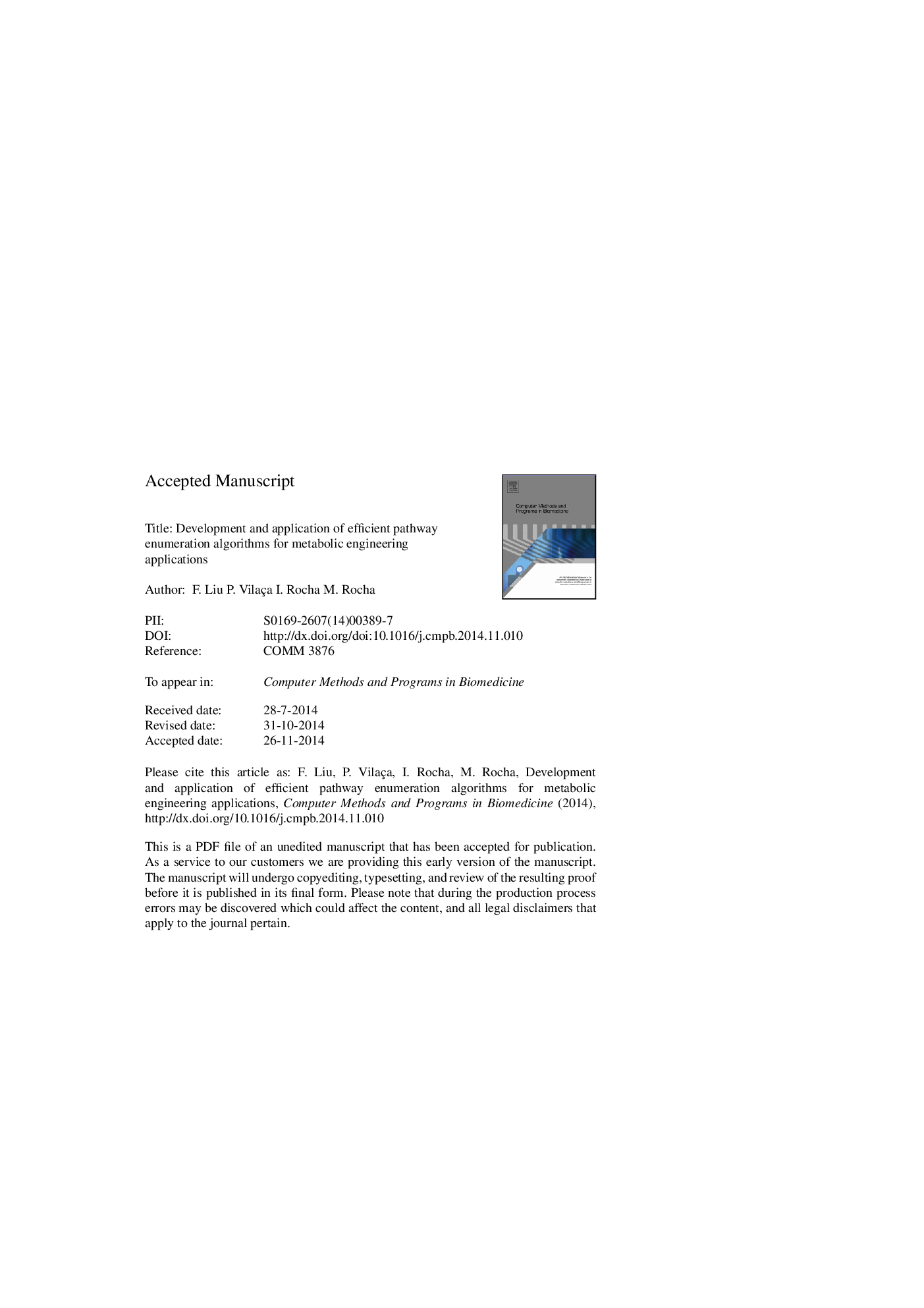| Article ID | Journal | Published Year | Pages | File Type |
|---|---|---|---|---|
| 10344521 | Computer Methods and Programs in Biomedicine | 2015 | 38 Pages |
Abstract
Metabolic Engineering (ME) aims to design microbial cell factories towards the production of valuable compounds. In this endeavor, one important task relates to the search for the most suitable heterologous pathway(s) to add to the selected host. Different algorithms have been developed in the past towards this goal, following distinct approaches spanning constraint-based modeling, graph-based methods and knowledge-based systems based on chemical rules. While some of these methods search for pathways optimizing specific objective functions, here the focus will be on methods that address the enumeration of pathways that are able to convert a set of source compounds into desired targets and their posterior evaluation according to different criteria. Two pathway enumeration algorithms based on (hyper)graph-based representations are selected as the most promising ones and are analyzed in more detail: the Solution Structure Generation and the Find Path algorithms. Their capabilities and limitations are evaluated when designing novel heterologous pathways, by applying these methods on three case studies of synthetic ME related to the production of non-native compounds in E. coli and S. cerevisiae: 1-butanol, curcumin and vanillin. Some targeted improvements are implemented, extending both methods to address limitations identified that impair their scalability, improving their ability to extract potential pathways over large-scale databases. In all case-studies, the algorithms were able to find already described pathways for the production of the target compounds, but also alternative pathways that can represent novel ME solutions after further evaluation.
Related Topics
Physical Sciences and Engineering
Computer Science
Computer Science (General)
Authors
F. Liu, P. Vilaça, I. Rocha, M. Rocha,
